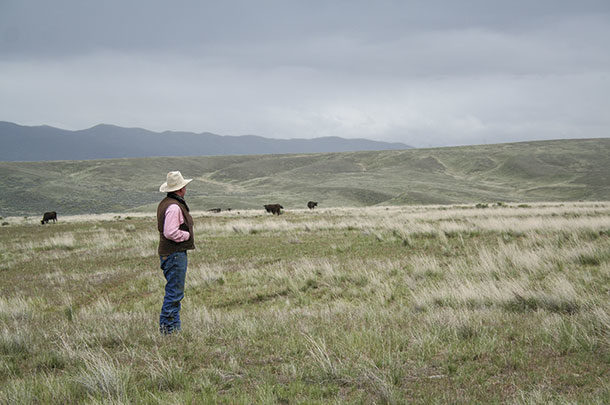There is no doubt that advancement of various technologies in agriculture has allowed us to realize gains in efficiencies of production and stewardship. As we work to improve our efficiencies to provide a safe and abundant food supply for the ever-growing population, it’s important we don’t lose sight of the basics of day-to-day production.
As ruminants, cattle give us the opportunity to make use of many different feedstuffs while executing a multitude of production practices. The ruminant has the uniqueness of transforming cellulose into high-quality protein products, and these animals also play an important role in nutrient cycling with our natural resources.
As stewards of these animals and resources, we must make sure we are covering the basics to allow this symbiotic relationship to flourish.
So what do those “basics” entail?
Goals
Often, when asking a producer, “What are your goals for the animals, the natural resources, labor, equipment, finances, family, etc.?” the answers are not well thought out. “We’ve always done it that way,” is a very common response. In some cases, the reasons offered for always doing something the same way will have some merit. On the other hand, some reasons have never been challenged.
Not challenged from a demeaning standpoint, but rather exploring the “what ifs” of changing things up. As we get absorbed in day-to-day activities, sometimes the perspective of improvement is lost. It’s important to identify your goals and challenge the road to achieve those goals, all the while keeping efficiency at the top of the list.
Feed
It’s no secret that keeping feed in front of or underneath your animals will be the largest expense of your operation, regardless of how you enterprise your financial numbers. Utilizing that expense efficiently requires understanding dry matter intake as the biggest driver, with the rest following that intake. We can’t lose sight of pasture utilization and use of that pasture from year to year, as the sustainability of that resource is critical for many reasons.
It all starts with animal type, size and class, as each will change how you match your animals with the resource in question. When working with purchased or raised feedstuffs, the same variable factors apply. In either case, logistics and costs associated with moving animals, hauling feed (dry matter vs. moisture vs. distance) and delivering nutrients are becoming a larger concern for many producers. However, you can’t impact what you don’t measure, and oftentimes, these calculations are not being made.
It seems intuitive that something as basic as figuring cost per unit of nutrient or actual dry matter content is something we calculate daily, but is it? It not only makes for a good business decision and helps with inventory management, but also allows for adequate nutrient delivery to the animal for consumption and utilization.
Our desire is to meet the animal’s requirements that coincide with our goals, but if we don’t know dry matter, or aren’t using scales to understand ingredient weight, account for shrink, or pay for what we purchased or raised, then guessing costs us efficiency in the areas of animal requirements and goal achievement. Most importantly, we could be shorting our animals’ essential nutrients that would otherwise keep them in good condition and healthy.
As we think about basic nutrients (energy, protein, fat, vitamins, minerals and water), we know they are essential for our animals to graze, grow, gain and reproduce. We can’t reach the performance efficiencies we desire if our animals aren’t healthy.
Proper nutrition and consistency of such is one of the easiest ways to achieve those big-picture efficiencies. We have a lot of good information available to us that supports maintaining good body condition and how to go about it. Do you consciously observe, record and adjust accordingly?
Over the past few decades, there has been good evidence that animals in good vitamin and mineral status and condition respond better to vaccinations and also have the ability to maintain a stronger immune system. So are your animals kept in good vitamin and mineral status at all times? If not, why?
At the time of vaccination, are you working with a good partner in obtaining the proper vaccine and maybe more importantly, are you storing, mixing and administering the vaccine properly and at the correct time? The health status we are trying to achieve transforms into performance and financial efficiencies that remain critical throughout the entire production cycle.
Sometimes, a little extra training with family, friends and employees pays off during branding and processing. Entertaining a program such as Beef Quality Assurance (BQA) could go a long way.
Reproduction
For obvious reasons, reproduction is critical. This part of management is an accumulation of many practices: nutritional results, genetics, environment, etc. We need to stay focused on the right animal for the right job and not chase trends not conducive to our goals. Measurement of reproductive parameters has become easier to record and track, but we still have to maintain our focus on the basics of development, which start in utero.
Also critical, we must stay true to our breeding parameters. We can’t make excuses for cattle that don’t breed during the breeding season and maybe even animals that don’t breed at the beginning of the breeding season. Think of the efficiency loss of the animals that aren’t bred in the first 21 to 42 days of the breeding season. Even though there are other marketing avenues for open females, review the development and maintenance cost and lost opportunity of all your inputs for those open females.
Stay dedicated to your breeding programs, and remember, cattle have a slow generation interval, so a primary plan and also a backup plan need to be in place ahead of time. Cover the basics by monitoring body condition, development progress (don’t overdevelop them), and the nutrition, health and reproductive management of bulls, which is often forgotten.
Too often, we tend to make simple things difficult while obsessing over perfection. The everyday basics of cow-calf production only get covered if they stay simple, and our goals are obtainable, but still challenging.
Whatever we set forth to do, we need to be able to do it safely and efficiently for the people, cattle and resources involved. Most importantly, don’t forget the human factor in all this. We are all human and being adaptable along the way is key. ![]()
PHOTO: As we work to improve our efficiencies to provide a safe and abundant food supply for the ever-growing population, it’s important we don’t lose sight of the basics of day-to-day production. Staff photo.

-
Steve Stafford
- Beef Technical Specialist
- Cargill Animal Nutrition
- Email Steve Stafford










